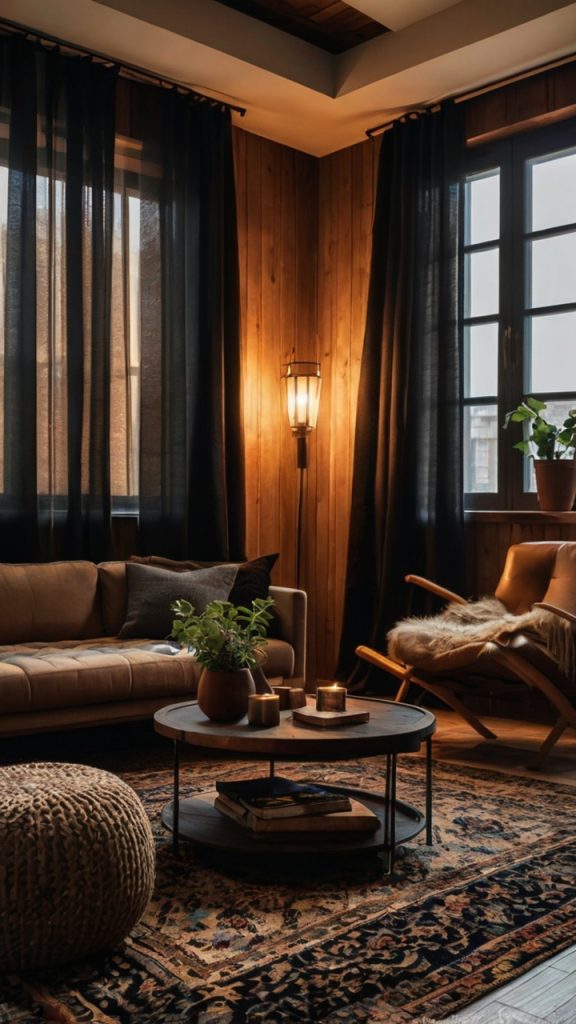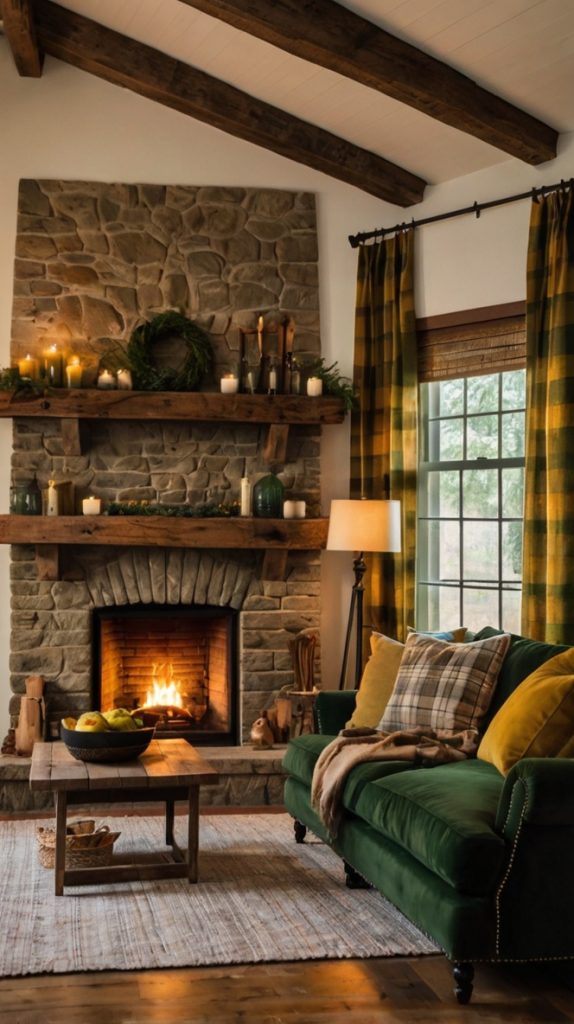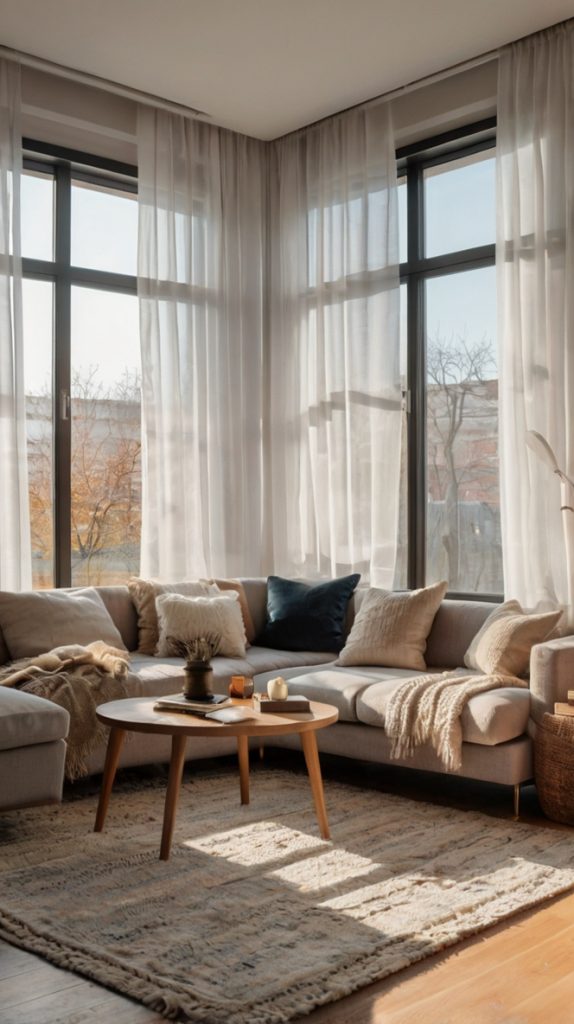10 Interior Design Living Room Ideas to Transform Your Space
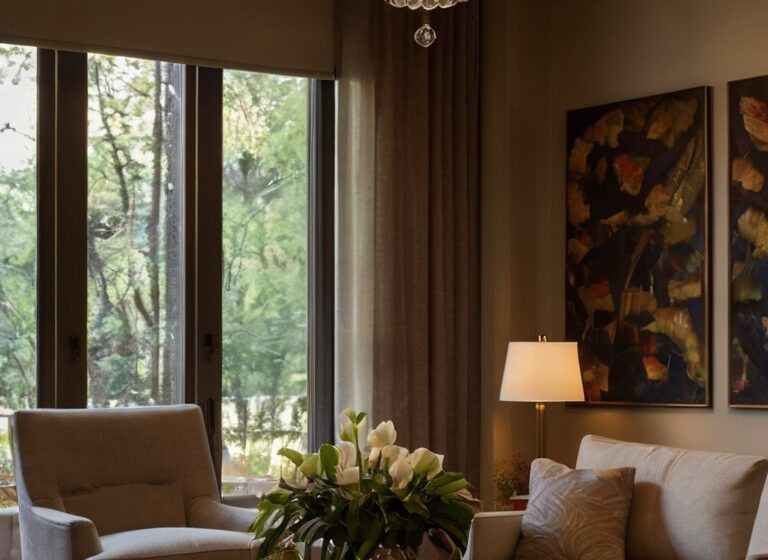
Creating a beautiful and functional living room is a goal for many homeowners. The living room is often the heart of the home, where family and friends gather to relax, socialize, and spend quality time together. Whether you’re starting from scratch or looking to refresh your existing space, this guide offers 10 interior design living room ideas to transform your space into a welcoming and stylish area.
1. Creating a Cozy and Inviting Living Room with Warm Tones and Textiles
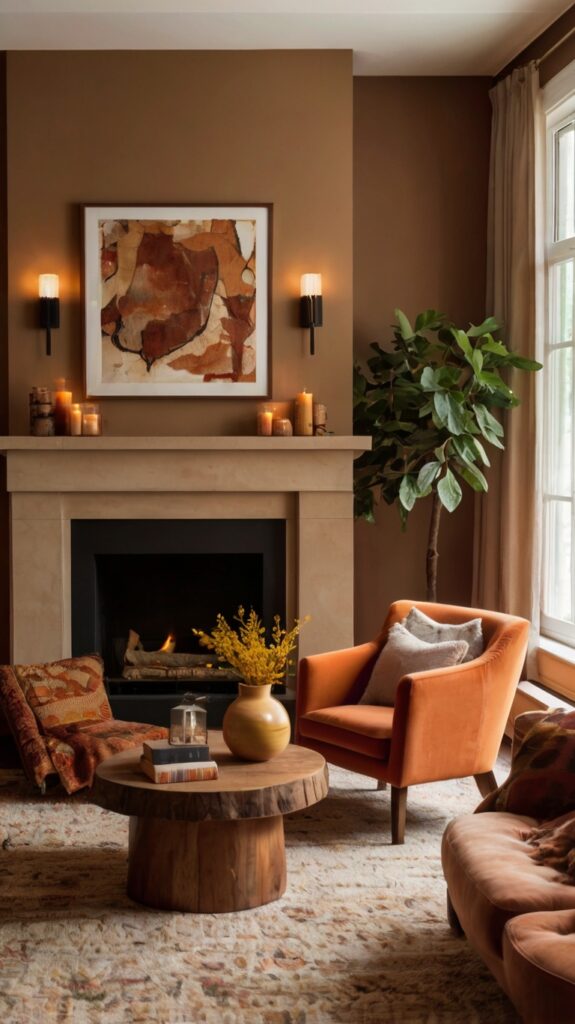
A living room that feels cozy and inviting is a haven for relaxation and socializing. Warm tones and soft textiles can transform a space into a comfortable retreat. Choose the Right Colors and Materials to Enhance Comfort and Aesthetics.
Selecting Warm Colors
Warm colors like soft reds, yellows, and oranges can create a welcoming atmosphere. These colors are known for their ability to make a space feel warm and inviting. Consider using these colors in your walls, furniture, and decorative items to create a cohesive look.
Incorporating Soft Textiles
Soft textiles such as plush rugs, comfortable throw pillows, and cozy blankets can add a layer of comfort to your living room. Choose materials like cotton, wool, and velvet for a luxurious feel. These materials not only enhance the comfort of your space but also add a touch of elegance.
Lighting for a Cozy Ambiance
The right lighting can significantly impact the mood of your living room. Soft, warm lighting can create a cozy and inviting atmosphere. Consider using a combination of overhead lighting, table lamps, and floor lamps to achieve the desired ambiance. Dimmable lights are also a great option as they allow you to adjust the lighting based on the time of day and the activity in the room.
Also Read: 10 Mid Century Modern Living Room Designs: Timeless Elegance for
2. Maximizing Space in Small Living Rooms with Clever Storage Solutions
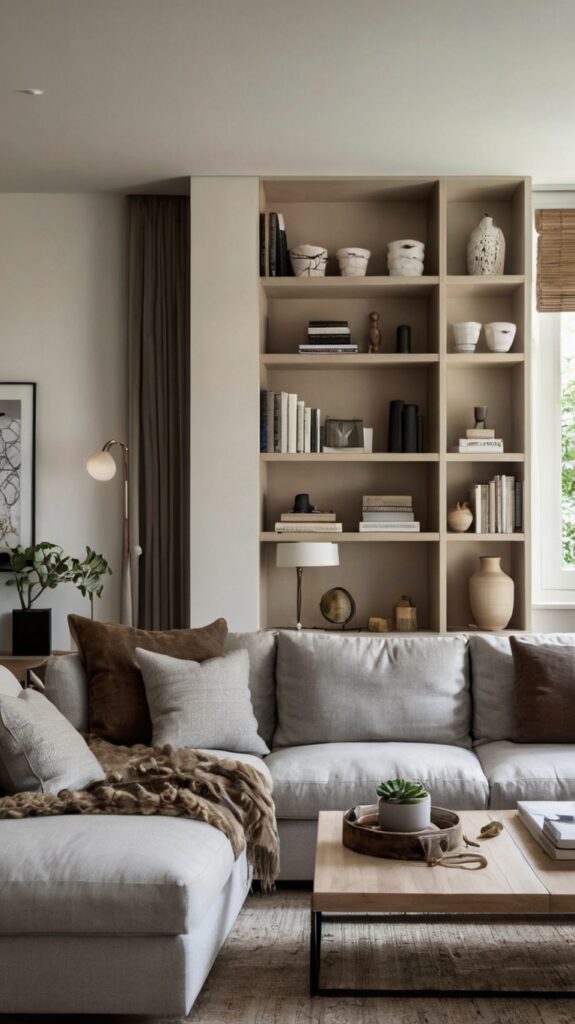
Small living rooms can be challenging, but with the right storage solutions, you can maximize space and maintain a clutter-free environment. Practical Tips for Organizing and Utilizing Every Inch of Your Living Room.
Multi-Functional Furniture
One of the best ways to maximize space in a small living room is to use multi-functional furniture. Items like ottomans with storage, sofa beds, and nested coffee tables can serve multiple purposes and help keep the room organized. These pieces are not only functional but also add to the overall aesthetic of the room.
Utilizing Vertical Space
Vertical space is often underutilized in small living rooms. Consider installing shelves, wall-mounted cabinets, and floating desks to make the most of the vertical space. These solutions can provide additional storage without taking up valuable floor space.
Hidden Storage Solutions
Hidden storage solutions can help keep your living room looking neat and organized. Built-in cabinets, under-bed storage, and hidden compartments in furniture can be excellent options for storing items out of sight. These solutions are particularly useful for small living rooms where every inch of space counts.
3. Designing a Modern and Minimalist Living Room with Clean Lines and Neutral Colors
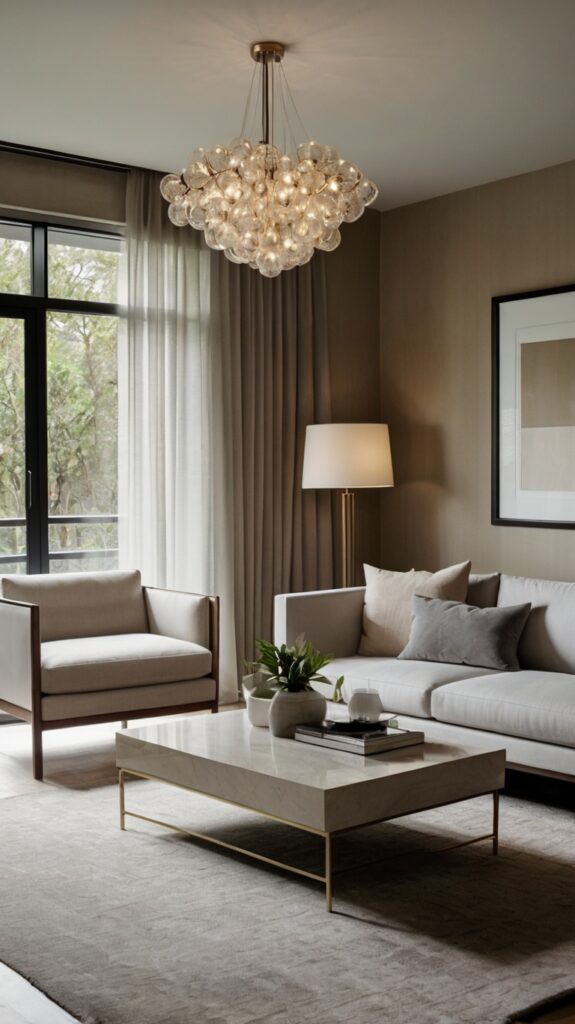
A modern and minimalist living room is all about simplicity and elegance. Clean lines, neutral colors, and a clutter-free environment can create a serene and sophisticated space. Simplify Your Space with a Modern and Streamlined Aesthetic.
Choosing Neutral Colors
Neutral colors like white, gray, and beige are the foundation of a modern and minimalist living room. These colors create a calm and neutral backdrop that allows other design elements to stand out. Use neutral colors for your walls, large furniture pieces, and floors to create a cohesive and balanced look.
Embracing Clean Lines
Clean lines are a hallmark of modern and minimalist design. Choose furniture and decor with simple, straight lines to maintain a streamlined and uncluttered look. Avoid overly ornate or decorative pieces that can detract from the minimalist aesthetic.
Minimalist Decor
In a minimalist living room, less is more. Keep decor to a minimum and choose pieces that serve a purpose or add a touch of elegance to the space. A few carefully selected art pieces, a statement light fixture, and a few plants can add character without overwhelming the room.
4. Adding a Touch of Luxury with High-End Materials and Finishes
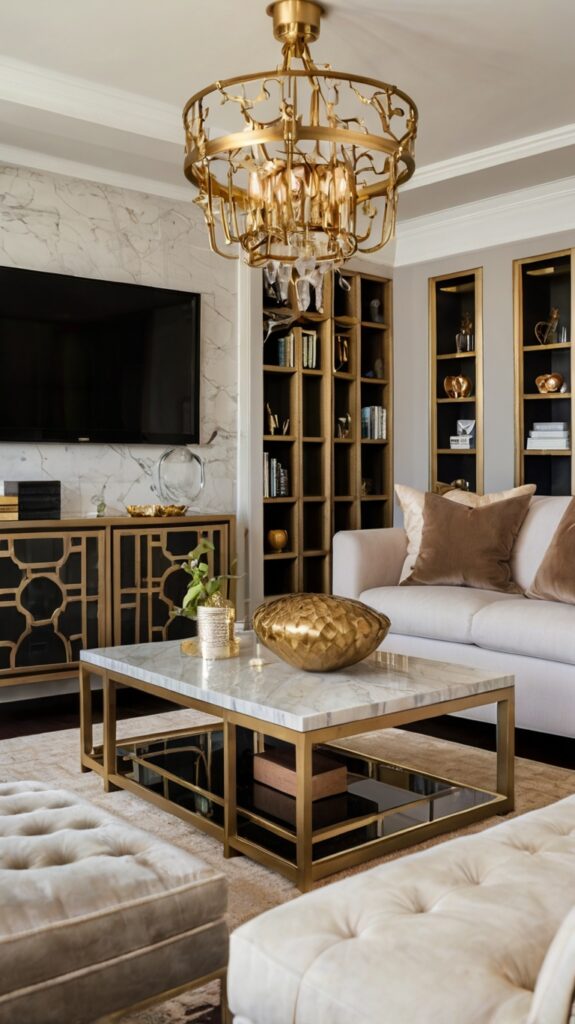
Luxury doesn’t have to be over-the-top. Subtle touches of high-end materials and finishes can elevate the look and feel of your living room. Elevate Your Living Room with High-Quality Materials and Luxurious Details.
High-Quality Materials
High-quality materials like marble, leather, and velvet can add a touch of luxury to your living room. Marble countertops, leather sofas, and velvet upholstery are excellent choices for creating a high-end look. These materials are not only beautiful but also durable and long-lasting.
Luxurious Finishes
Luxurious finishes like gold, silver, and brass can add a touch of elegance to your living room. Use these finishes in small doses, such as in light fixtures, decorative objects, and hardware. A gold-framed mirror or a brass lamp can add a sophisticated touch to your space.
Custom Details
Custom details like built-in shelves, custom window treatments, and bespoke furniture can add a personal touch to your living room. These details show that you have put thought and care into your design, which can enhance the overall luxury of the space.
Also Read: 15 Stylish Open Kitchen Ideas for a Modern Home
5. Creating a Family-Friendly Living Room with Durable and Comfortable Furniture
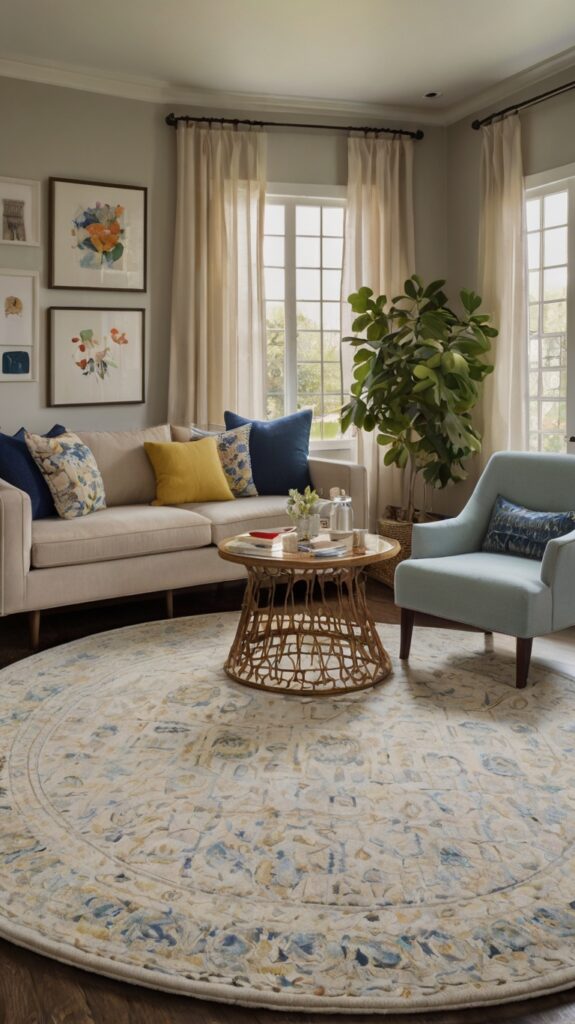
A family-friendly living room should be both comfortable and durable. Choose furniture that can withstand the demands of everyday use while still looking stylish. Design a Space That Can Withstand the Wear and Tear of Daily Life.
Durable Materials
Choose furniture made from durable materials that can withstand wear and tear. Leather, microfiber, and performance fabrics are excellent choices for family-friendly living rooms. These materials are easy to clean and can handle spills and stains.
Comfortable Seating
Comfortable seating is essential in a family-friendly living room. Choose sofas and chairs with supportive cushions and a comfortable seating depth. Sectional sofas are a great option as they provide ample seating and can be arranged in various configurations to suit your needs.
Child-Friendly Decor
Consider the needs of children when decorating your living room. Choose decor that is child-friendly and safe. Avoid sharp edges and fragile items that can be easily broken. Opt for soft, rounded furniture and durable decor that can withstand the energy of children.
6. Incorporating Natural Elements to Bring the Outdoors Inside
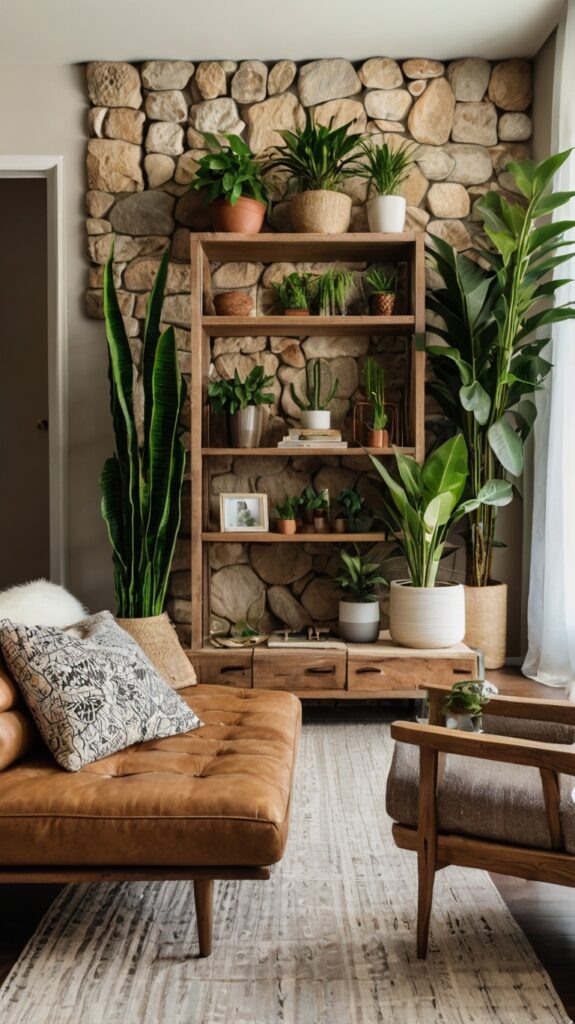
Bringing the outdoors inside can create a refreshing and calming atmosphere in your living room. Incorporate elements like indoor plants, natural wood, and stone to bring a touch of nature into your space. Use Plants, Natural Wood, and Stone to Create a Connection with Nature.
Indoor Plants
Indoor plants can add a touch of greenery and freshness to your living room. Choose low-maintenance plants that can thrive indoors, such as snake plants, pothos, and peace lilies. Place plants in strategic locations to add visual interest and improve air quality.
Natural Wood
Natural wood can add warmth and texture to your living room. Use wood in furniture, flooring, and decorative elements to create a natural and organic look. Reclaimed wood and sustainable materials are excellent choices for an eco-friendly and stylish design.
Stone Accents
Stone accents can add a natural and earthy feel to your living room. Use stone in accent walls, fireplaces, and decorative items to create a connection with nature. Stone can also add a touch of luxury and sophistication to your space.
7. Designing a Multifunctional Living Room That Serves Multiple Purposes
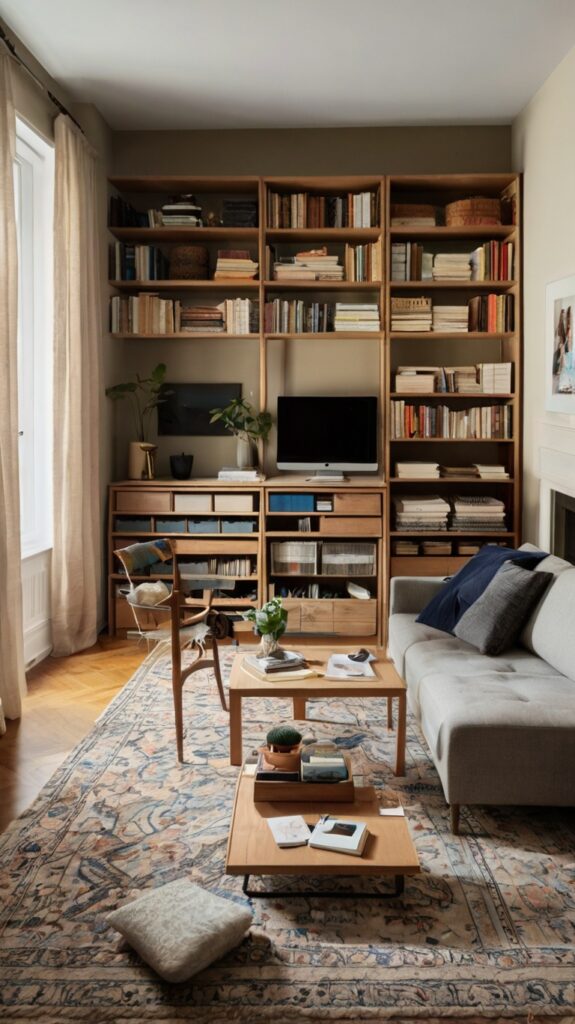
In today’s homes, living rooms often serve multiple purposes. Whether it’s a home office, a playroom, or a relaxation area, a multifunctional living room can meet a variety of needs. Create a Space That Can Adapt to Different Activities and Needs.
Flexible Furniture
Flexible furniture can help you create a multifunctional living room. Choose pieces that can be easily moved and rearranged to suit different activities. Nesting tables, ottomans with storage, and foldable desks are excellent choices for a versatile living room.
Zoning with Rugs and Furniture
Zoning your living room can help define different areas for different activities. Use rugs and furniture to create distinct zones for relaxation, work, and play. For example, a large rug can define a seating area, while a smaller rug can create a play area for children.
Smart Storage
Smart storage solutions can help you keep your multifunctional living room organized. Use storage ottomans, built-in shelves, and under-bed storage to keep clutter out of sight. Labeling storage bins and baskets can also help you stay organized and find items quickly.
Also Read: Black and White Bedroom: 15 Stylish and Timeless Ideas
8. Enhancing Your Living Room with Art and Personal Decor
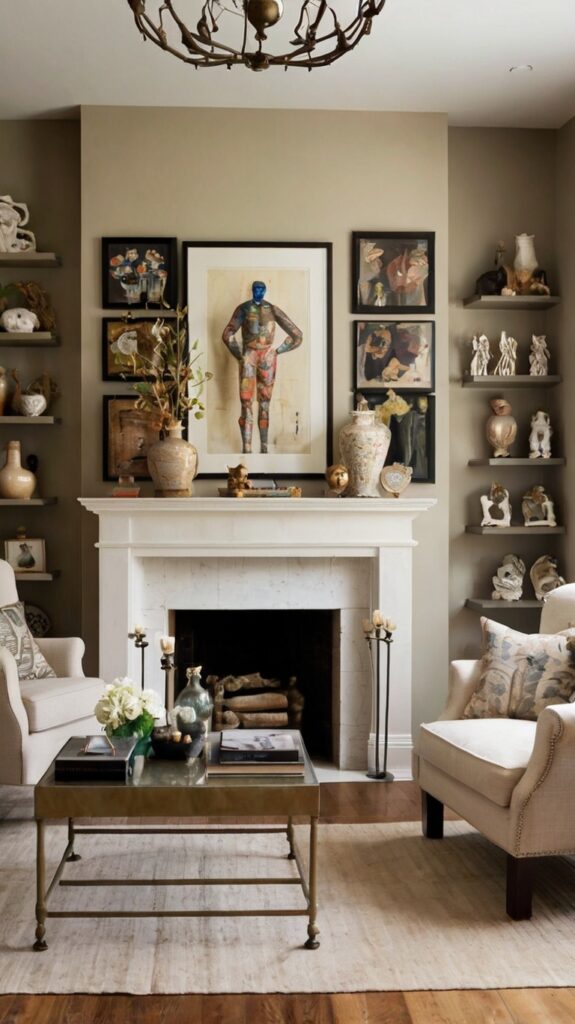
Art and personal decor can add character and personality to your living room. Choose pieces that reflect your style and interests to create a unique and inviting space. Create a Personal and Unique Living Room with Art and Decor.
Art Pieces
Art pieces can be a focal point in your living room. Choose art that resonates with you and complements your overall design. Whether it’s a large canvas, a collection of prints, or a sculpture, art can add a touch of elegance and personality to your space.
Personal Photos and Memories
Personal photos and memories can make your living room feel more personal and meaningful. Display family photos, travel mementos, and other personal items to create a space that reflects your life and experiences. Use frames and displays that complement your decor to keep the look cohesive.
Unique Decor
Unique decor items can add a touch of individuality to your living room. Look for one-of-a-kind pieces at flea markets, antique stores, and local artisans. Unique decor can also include custom items like hand-painted vases, handmade pottery, and bespoke furniture.
9. Choosing the Right Color Scheme for Your Living Room
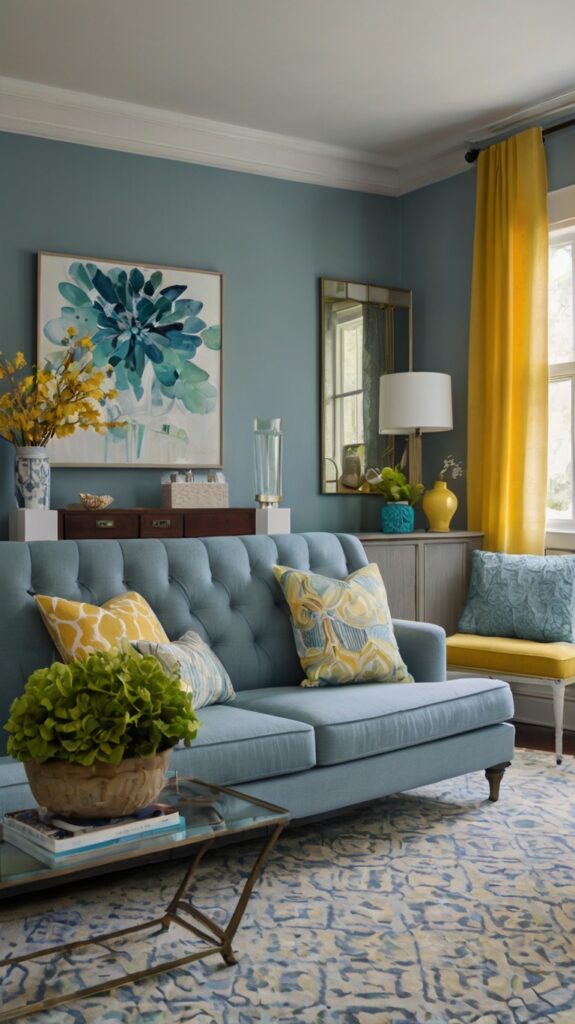
The right color scheme can significantly impact the mood and atmosphere of your living room. Select Colors That Create the Desired Mood and Aesthetic.
Understanding Color Psychology
Color psychology can help you choose colors that create the desired mood in your living room. For example, blue is known for its calming properties, while yellow can create a cheerful and energetic atmosphere. Consider the mood you want to create and choose colors that support that mood.
Using a Color Palette
A color palette can help you create a cohesive and balanced look in your living room. Choose a primary color, a secondary color, and one or two accent colors to create a harmonious color scheme. Use the primary color for large elements like walls and furniture, and the accent colors for smaller details like pillows and decor.
Balancing Warm and Cool Colors
Balancing warm and cool colors can create a visually appealing and balanced living room. Warm colors like red, orange, and yellow can create a cozy and inviting atmosphere, while cool colors like blue, green, and purple can create a calm and relaxing environment. Use a mix of warm and cool colors to create a balanced and harmonious space.
10. Adding Functional and Stylish Lighting to Your Living Room
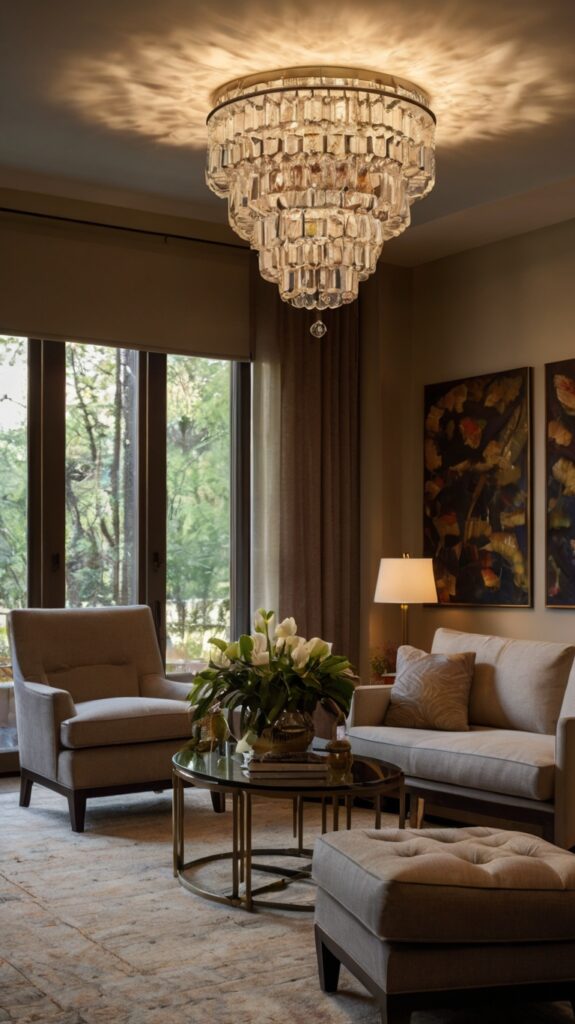
Lighting can transform the look and feel of your living room. Use a Mix of Lighting to Create the Desired Ambiance.
Layered Lighting
Layered lighting involves using a mix of different types of lighting to create a versatile and functional living room. Use a combination of overhead lighting, task lighting, and ambient lighting to create a layered look. This approach allows you to adjust the lighting based on the time of day and the activity in the room.
Task Lighting
Task lighting is essential in a living room, especially if you use the space for reading, working, or other activities. Table lamps, floor lamps, and under-cabinet lighting can provide focused light for specific tasks. Choose task lighting that is functional and stylish to enhance the overall look of your living room.
Ambient Lighting
Ambient lighting creates a warm and inviting atmosphere in your living room. Soft, warm lighting can create a cozy and relaxing environment. Use ambient lighting in the form of table lamps, floor lamps, and wall sconces to create a comfortable and inviting space.
Dimmable Lighting
Dimmable lighting allows you to adjust the brightness of your lights to suit different moods and activities. Consider installing dimmer switches for your overhead lights and table lamps to create a versatile and functional living room. Dimmable lighting can help you create the perfect ambiance for any occasion.
Conclusion
Designing a beautiful and functional living room is a rewarding project that can transform your home into a welcoming and stylish space. By incorporating these 10 interior design living room ideas, you can create a living room that meets your needs and reflects your personal style. Whether you’re creating a cozy and inviting space, maximizing a small living room, or designing a multifunctional area, these tips can help you achieve the perfect living room.
